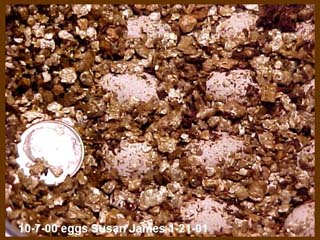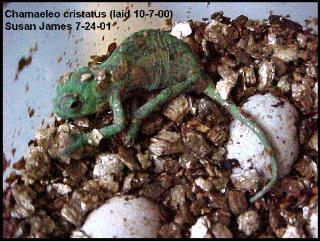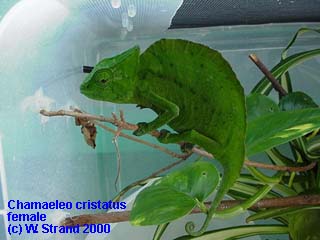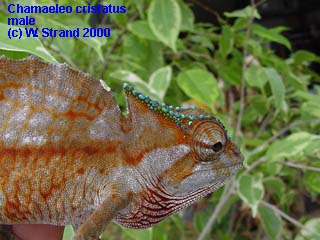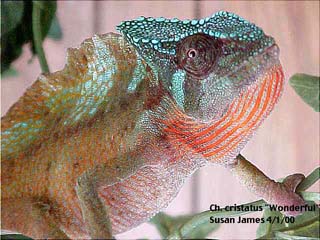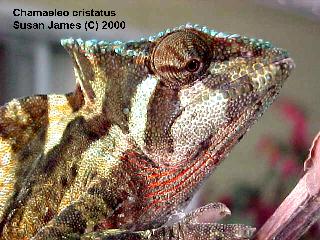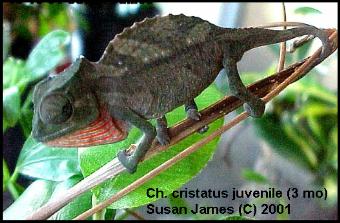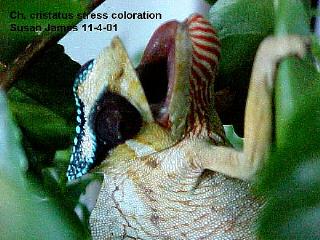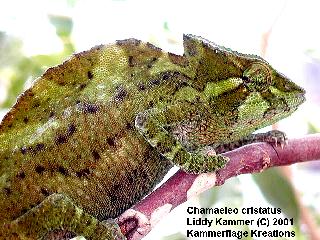C. cristatus
possesses a a tall, pointed casque behind a flat head. The casque is formed by the lateral crests. The parietal crest is simple. The tail is relatively short in comparison with the body. Scalation is smooth with scattered, enlarged, flat scales among the regular scales. Basic colors for both sexes are brown, green, khaki, maroon, or gray. The color is uniform on the body with an irregular netlike pattern. The interstitial skin of the throat is bright red or orange.
Females of this species are larger (total length 11 inches) than males (total length approx. 10 inches). Males have high, fanlike sailfins on their backs and tails which are less developed in females. Females are more of a green hue while males exhibit the browns, khaki and grays. Males have vivid blue scales outlining the head crest that particularly brighten during territorial displays.
This species is a terrestrial chameleon that requires an extremely humid, or more plainly, a wet environment. A continuously running ultrasonic humidifier that dews the cage, as well as constant dripping of daytime water help meet this need. Temperatures should remain constant at approximately 75ºF with only a small drop at night. While this species rarely can be seen "basking", they enjoy high UV exposure, so double UV lights can be used. Temperament ranges from timid (usually males) to aggressive (usually females). Most common prey insects are eagerly accepted by this species, although they are not aggressive hunters. They show a fondness for larvae type foods. Males in particular are sensitive to supplementation, so little or no supplements should be used if the prey items are properly gut-loaded. This is a very difficult species to maintain, even for the most experienced keepers.
Little is known about reproduction. One CB female's gestation was four months, with two clutches in one year. Sixteen to 37 eggs may be laid. Three reported hatchings from WC females put incubation at eight to nine months at temperatures of approximately 72ºF, with a few degrees drop at night. One female bred in captivity had gestation of three and 1/2 months and incubation of 10 months
Contributed by Susan James and E. Pollak with incubation informtion provided by Doug Dix, Ron Roper, and Tim Schuetze
References
Klaver, C. & W. Boehme. 1997. Chamaeleonidae.
Das Tierreich, 112: i-xiv' 1 - 85. Verlag Walter de Gruyter & Co., Berlin, New York.
Le Berre, F. 1994. The New Chameleon Handbook. Barron's Educational Series.
Martin, J., 1992. Masters of Disguise: A Natural History of Chameleons. Facts On File, Inc., New York, NY.
Necas, P. 1999. Chameleons: Nature's Hidden Jewels. Krieger Publishing Company, Malabar, FL.
|

